
There is no end to the making of lists, but I’d be lying if I said that I didn’t enjoy reading them as much as I like making them. There’s a polemical side to criticism that finds a crystalline form in lists, but contentiousness isn’t their only value. For starters, lists are mnemonic, gathering things to remember, and also judgmental, asserting what’s worth remembering. That’s why I don’t limit myself to a Top Ten but stretch the list to fit as many films as I’m moved to include. The essential idea that guides me in criticism is that the world of movies is far bigger than the run of widely publicized releases. At year’s end, I compile the movies that imposed themselves on memory and which (even if their subjects are grim or their tones are severe) have provided enduring pleasures and illuminations.
This year, it’s all the more important to offer a widely inclusive list, because a wide range of American filmmakers have caught up with the inescapable phenomenon of the recent past: the resurgence of openly anti-democratic forces and brazenly hate-driven ideologies, the crisis of illegitimate rule, the menace of authoritarianism, the potential end of even our current debilitated American democracy. The phenomenon is certainly not limited to the United States, and filmmakers from around the world have long been confronting it in their own countries bravely, insightfully, and ingeniously. For years, many of the best American filmmakers have been making films of political outrage, with the unsurprising likes of Spike Lee, Jim Jarmusch, and Frederick Wiseman at the forefront, and such younger filmmakers as Jordan Peele, Garrett Bradley, and Eliza Hittman joining them. This year offers a shift in the cinematic paradigm by way of a host of memorable movies; there’s something new and extraordinary in the air, and it has precisely to do with history and memory—and, most powerfully, their intersection.
The ways in which the best American filmmakers are contending with the past reflect and resist the falsifications, denials, and suppressions of history that are integral to the right wing’s political agenda of miseducation. The past is the battleground on which the contest for American power is being fought. It’s a battle not for the American soul but for the choice between soul and soullessness, between a living democracy and the zombie one that has been envisioned in recent years in such movies as “The Dead Don’t Die,” “Monrovia, Indiana,” and “Us.” For current filmmakers, the turn to the past is no retreat from present-day conflicts but a crucial, targeted, and deep-rooted contention with them—a diagnosis and an intervention. Their films expose the foundation, the substructures, the underlying abuses and sedimented forms of power that are manifested in today’s politics.
Walter Benjamin, in his final completed work, “Theses on the Philosophy of History,” from 1940, written in France after Nazi Germany’s invasion of Poland, recognized the connection between history and political emergency. “To articulate the past historically does not mean to recognize it ‘the way it really was.’ . . . It means to seize hold of a memory as it flashes up at a moment of danger,” he wrote. He acknowledged that turning to the past can be a present-tense political struggle, on the premise that “even the dead will not be safe from the enemy if he wins.” The lies being foisted on students in many states about Southern race relations and the Confederacy defile the experience of those who endured enslavement and Jim Crow, just as the prevalence of neo-Nazi ideology in the current-day Republican Party and amid media and social-media moguls is an offense to the victims of Nazism and those who lost their lives in the battle to defeat Nazi Germany.
This year, Peele, in “Nope,” connected the history of movies to the perpetuations of grand-scale evils; James Gray, in “Armageddon Time,” intertwined a childhood story of white privilege with the arrogant rise of the Trump family; David O. Russell, in “Amsterdam,” portrayed a trio of the First World War’s insulted and injured as they resist a Depression-era right-wing coup; Chinonye Chukwu, in “Till,” revealed the intimate heroism behind the creation of a historic moment; and Ricky D’Ambrose, in “The Cathedral,” working on a minuscule budget, dramatized the inseparability of family conflict and aesthetic education from the political crises of their time. All of these directors are taking part in the ongoing culture war over what stories of American life get taught. They’re taking up cinematic arms against nostalgia, cliché, and myth—against the notion that there’s one story to tell, and against grotesquely oversimplified ways of telling it. They don’t fall into the trap of mere topicality but devise distinctive and individual forms for the recuperation of history, for manifesting the ceaseless life of the past. And, as Great Britain backslides into its own imperial myths, British filmmakers such as Terence Davies and Joanna Hogg delved into the country’s actual past, with thrilling blends of confrontation and imagination.
The turn to history also reflects the outrageousness of the time: the seemingly overwhelming challenge of capturing, in the present tense, the open rise of American fascism amid the aftershocks of the COVID pandemic. In this moment, it’s worth consulting the movies of filmmakers working under censorious regimes, where pointing a camera in the street is a dangerous act of defiance, and also a maneuver in the culture war. In Iran, for example, such directors as Jafar Panahi (who’s currently imprisoned) and his son, Panah, film present-day stories on location, encapsulating a vast span of their country’s social crises by way of local and intimate dramas.
Such directors are keenly aware of the threat that their films may not be screened, or may become unavailable, and that movies from around the world are stringently blocked, too. In the U.S., the official censorship of films is rarely an issue; instead, the menace is one borne of commercial imperatives. Classic films risk getting swallowed up contractually: companies get bought, rights expire, and, whereas some movies slip away through the business model of planned scarcity, others vanish out of mere indifference. New films are pinched between the shift toward streaming (which favors serial TV over movies) and the effects of the pandemic, which has sharply cut into moviegoing habits, especially among older viewers of art-house films—as seen in the box-office failure of most of the late-year batch of Oscar-type releases. Slipping from limited theatrical release to rapid engulfment in an oceanic streaming domain, many movies of great merit remain nominally available but leave hardly a trace of their presence. Here, too, Panahi’s 2015 film, “Taxi,” with its depiction of the director’s own dealings with a friendly bootlegger of banned, self-burned DVDs, offers wise counsel for keeping ample lists: because it’s imperative to watch what you can when you can, as soon as you can.
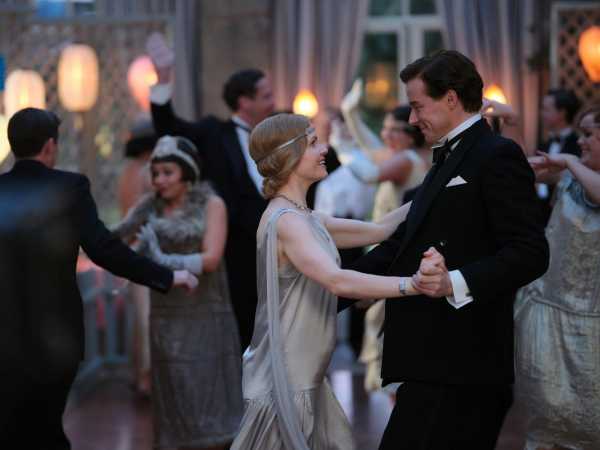
Photograph courtesy Roadside Attractions1. “Benediction”
With this bio-pic of the First World War poet and memoirist Siegfried Sassoon, Terence Davies creates a tautly controlled, scathing, yet often exuberant vision of creative fury, lost love, the cruel repression of queer lives, and the devastation of war. Its historical scope and personal passion are both enormous.
2. “Nope”
Jordan Peele’s cinema-centric science-fiction film is a superspectacle about the creation of superspectacles, a fantasy about the irrepressible reality of history, a metaphysical vision of the material world of the image—and a giddily imaginative, symbolically powerful thriller.
3. “Armageddon Time”
James Gray tracks the epicenter of American political pathology to his native borough of Queens in this quasi-autobiographical coming-of-age story, set in 1980, in which a middle-class Jewish family faces the chill winds of history—and in which the Trump family figures prominently.
4. “No Bears”
Working clandestinely in Iran with the threat of arrest hanging over his head, Jafar Panahi plays himself in this wry, enraged metafictional tale about the prospect of exile and the insidious oppression of religious authorities, one that’s centered on his visit to a border town in order to tele-direct a film across the border in Turkey.
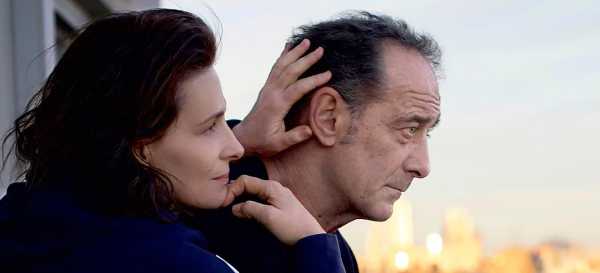
Photograph courtesy Wild Bunch5. “Both Sides of the Blade”
A radio journalist and a sports agent are haunted by the past, and by current-day social conflicts, in Claire Denis’s emotionally bruising romantic melodrama, which delivers fierce dialectical battles in an abrupt, pugnacious style.
6. “Hit the Road”
A family’s car trip through rural Iran is shadowed by danger and strained by imminent separation in the first feature by Panah Panahi (Jafar’s son), which features one of the great antic, and poignant, child performances of recent years.
7. “Amsterdam”
The traumas of the First World War (again), the rise of Fascism in Europe, and the true story of a failed right-wing coup against a Democratic President provide the historical framework for David O. Russell’s effervescent yet embittered comedic drama of friendship, romance, accidental heroism, and the American way of hatred.
8. “Saint Omer”
The real-life story of a Senegalese woman in France who was charged with the killing of her young child—and of the French filmmaker Alice Diop’s own effort to document the case—is the premise of this fiction feature by Diop, who confronts the political and personal implications of the events.
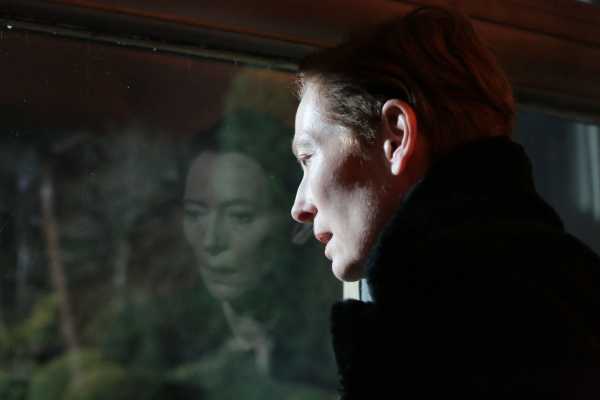
Photograph courtesy A249. “The Eternal Daughter”
Joanna Hogg’s wildly imaginative and meticulously crafted sequel to her two “Souvenir” films unfolds the sentimental and cinematic journey of a middle-aged filmmaker and her elderly mother, stars Tilda Swinton in both roles, and includes a ghost.
10. “The Cathedral”
Ricky D’Ambrose’s second feature—an autobiography in familial and historical cataclysms, a coming-of-age story in visual whispers of beauty—is an original kind of personal film, which embraces a mighty scope on an intimate scale.
11. “Till”
This historical drama of the lynching of Emmett Till, in Mississippi, in 1955, is centered on the heroic effort of Mamie Till-Mobley, his mother, to publicize the killing and inspire resistance to the Jim Crow laws and practices that gave rise to it. The movie’s director, Chinonye Chukwu, develops a distinctive aesthetic that befits the subject.
12. “Don’t Worry Darling”
Olivia Wilde’s fanatically detailed, emotionally off-kilter reconstruction of a nineteen-fifties planned community and its charismatic leader gives rise to a wild genre mashup and an incisive aesthetic critique.
13. “Saturday Fiction”
Shown at festivals in 2019 but unreleased in the U.S. until this year, Lou Ye’s vision of spies versus spies, in the milieu of theatre, in internationalized Shanghai, under Japanese occupation, at the outset of the Second World War, is a dazzlingly complex thriller and a sharp allegory of current-day efforts to make art under a repressive regime.
14. “In Front of Your Face”
The South Korean director Hong Sangsoo builds his dialogue-centered dramas around his performers, and this calmly ferocious fiction of a long-retired actress’s reckoning with mortality and art stars the acclaimed actress Lee Hye-young, who herself had been absent from movies for many years.
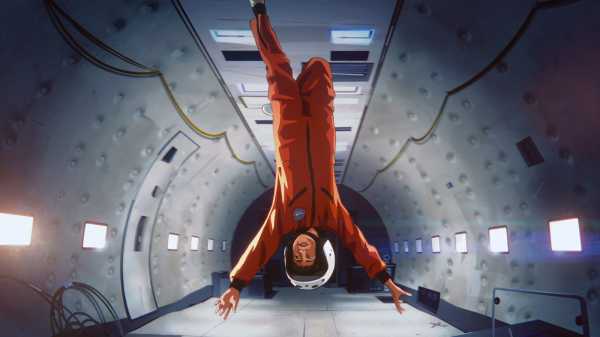
Image courtesy Netflix15. “Apollo 10 1/2: A Space Age Childhood”
Richard Linklater’s quasi-autobiographical animated fantasy, about a fourth grader who’s recruited by NASA, re-creates family life in 1969, in the suburbs of Houston, in loving yet critical detail.
16. “Framing Agnes”
The filmmaker Chase Joynt’s rediscovery of an academic archive of interviews with gender-nonconforming subjects, conducted from 1957 to 1960, gives rise to a passionate and insightful view of trans lives, then and now, by way of reënactments and discussions with the reënactors.
17. “Ahed’s Knee”
The Israeli filmmaker Nadav Lapid furiously dramatizes a dissident Israeli filmmaker’s mind-bending confrontation with his past, and with the country’s current politics, during a trip to a remote village to present a film.
18. “The Novelist’s Film”
Another of the three films by Hong released in the U.S. this year, and also starring Lee, this is the ironic tale of a brusque, impetuous writer who stops writing and decides to try moviemaking.
19. “The Inspection”
The passion of Elegance Bratton’s quasi-autobiographical drama—about a twenty-five-year-old Black and gay man who, to escape homelessness, joins the Marines and endures persecution in basic training—transforms his realistic style into a bearing of witness.
20. “A Couple”
Sophia Tolstoy is the only onscreen character in the documentary filmmaker Frederick Wiseman’s one-woman drama, which relies on the artifice of on-camera monologues to get at the politics of domestic life and the power struggles embedded in the history of art.
21. “Master”
The hidden racist background of a small New England liberal-arts college returns with a metaphysical force in Mariama Diallo’s harrowing first feature, which expands its historical scope daringly far.
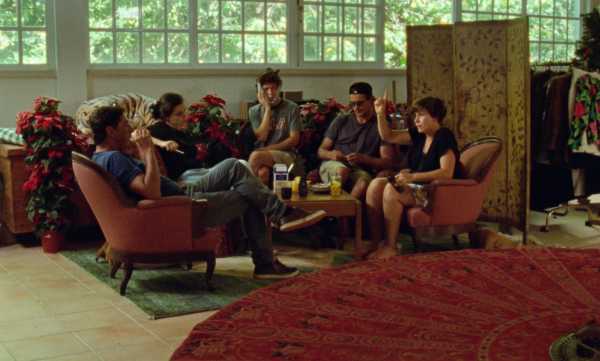
Photograph courtesy KimStim22. “The Tsugua Diaries”
This drama, directed by Maureen Fazendeiro and Miguel Gomes, about a movie cast and crew working under the stress of their pandemic bubble in rural Portugal, is the most original fictional film to date about the age of COVID, not least because of its day-by-day chronological structure, which runs backward.
23. “Beba”
Rebeca Huntt’s first feature is a documentary self-portrait, in which she discovers that her parents’ lives and her Manhattan upbringing are inseparable from local and global political currents and finds that on-camera interviews with family members are fraught with unresolved conflicts.
24. “Clytaemnestra”
Ougie Pak’s tense drama of artistic myths and realities, about a South Korean theatre company rehearsing a production of “Agamemnon” in a rented house in Greece, is centered on a young actress who endures emotional abuse from a charismatic male director.
25. “RRR”
This historical action-fantasy (the title stands for “Rise Roar Revolt”), directed by S. S. Rajamouli, imagines the encounter and shared combat, in the nineteen-twenties, of two real-life Indian revolutionary leaders, with results that are as phantasmagorical as they are melodramatic.
26. “Introduction”
The third new film of Hong’s to be released in 2022 is a romantic drama of an astonishing spareness, about a young South Korean man who follows his girlfriend to Germany. What emerges are irreconcilable differences between parents and children, and a grim over-all vision of generational conflict.
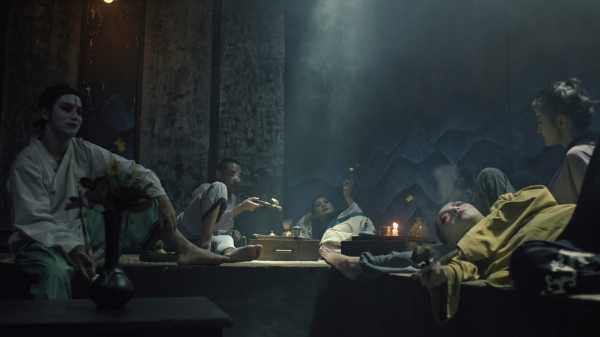
Photograph courtesy Icarus Films27. “A New Old Play”
The destiny of members of a Chinese theatre troupe, from the nineteen-twenties and the Second World War to the Cultural Revolution—and even into the afterlife—is showcased, with wry theatrical artifice, in Qiu Jiongjiong’s allusive approach to the history of twentieth-century China.
28. “EO”
In the octogenarian Jerzy Skolimowski’s audacious remake of Robert Bresson’s 1966 classic, “Au Hasard Balthazar,” a donkey’s journeys through Poland and Italy provide a diagnostic cross-section of human cruelty and compassion.
29. “Descendant”
Margaret Brown’s documentary traces the discovery, in Mobile, Alabama, of the submerged wreckage of the last-known ship that brought captive Africans to the United States, in 1860, and the town’s enduring legacy of enslavement and Jim Crow-era exclusions and discriminations.

Photograph courtesy A2430. “Marcel the Shell with Shoes On”
The clever, tender, quietly melancholy feature-length expansion of the Web series by Jenny Slate and Dean Fleischer Camp is a metafictional blend of animation and live action, in which Camp (playing himself) encounters the living shell (voiced by Slate) and decides to make a film about him. ♦
Sourse: newyorker.com






